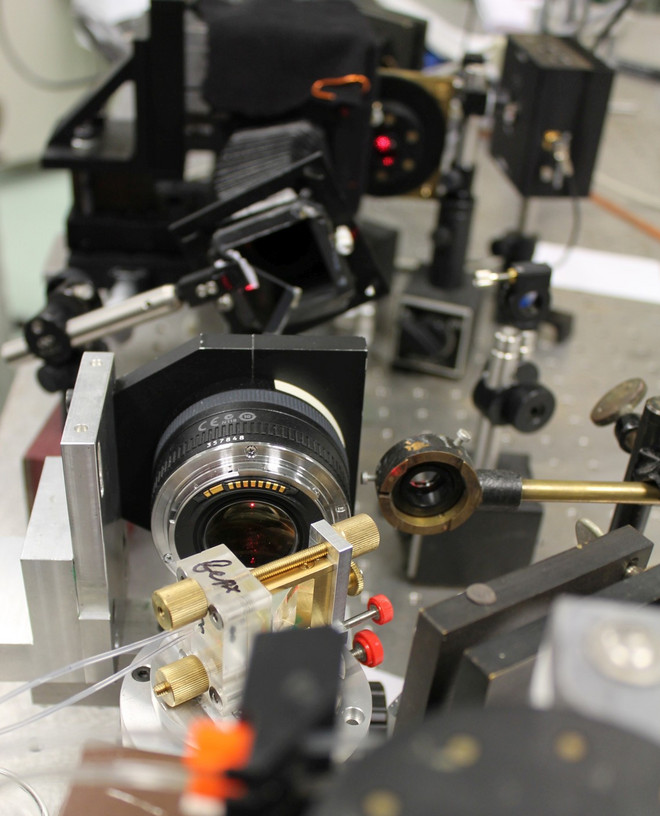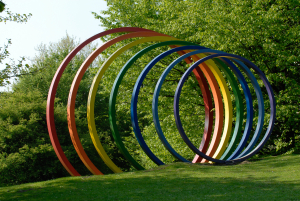

May 4, 2020 18:11
Whereas viruses are too small to be revealed visually, their interaction with antibodies can be made visible. The Leibniz Institute for Analytical Sciences (ISAS) and the Collaborative Research Centre (SFB) 876 of the Technical University (TU) Dortmund intend to apply a measurement method to the novel corona virus Sars-Cov-2.
 The cooperation between ISAS and TU Dortmund University, which has been in place since 2010, could result in an effective method for the containment of the novel coronavirus (COVID-19). With the virus sensor, Dortmund physicists, computer scientists and mathematicians have developed an instrument that enables analysis procedures to be carried out in real time and on site. The sensor can also be used outside of special laboratories to determine the infection status of large groups of people, such as airport passengers or residents of entire housing estates. This measuring method can prevent the introduction, further spread and recurrence of viruses.
The cooperation between ISAS and TU Dortmund University, which has been in place since 2010, could result in an effective method for the containment of the novel coronavirus (COVID-19). With the virus sensor, Dortmund physicists, computer scientists and mathematicians have developed an instrument that enables analysis procedures to be carried out in real time and on site. The sensor can also be used outside of special laboratories to determine the infection status of large groups of people, such as airport passengers or residents of entire housing estates. This measuring method can prevent the introduction, further spread and recurrence of viruses.
It is conceivable that the biosensor could now also be used to combat the novel coronavirus. To this end, scientists at ISAS and TU Dortmund University are currently working with anti-SARS-CoV-2 antibodies to prepare the Sensor for the corona viruses.
Indeed, our sensor works by exploiting a physical effect that bridges the gap between the micrometer and nanometer range: viruses - including corona viruses - are objects on the nanometer range and thus too small to be detected with optical microscopes, which are only accessible to the micrometer range. Microscopes lack the necessary magnifying power for the direct detection of viruses. The sensor, on the other hand, detects viruses indirectly by measuring changes in the so-called surface plasmon resonance that the viruses cause on the sensor. In principle, this is based on the detection of label-free biomolecular binding reactions on a gold surface, in a series of images taken with a CCD camera. Even though a virus is only nanometer in size, the resonance as an effect extends over the micrometer range. These characteristic changes are determined by image and signal analysis methods based on special neural networks and allow the identification of different viral pathogens with high detection rates in real time.
"By this, viruses become optically detectable, which allows a low-cost, mobile sensor and very fast tests," summarizes Dr. Roland Hergenröder, who heads the project group on the ISAS side. He hopes that with the availability of anti-SARS-CoV-2 antibodies, the Sensor will soon be able to be used for the detection of the novel coronavirus.
Sensor and analysis methods were developed in a cooperation of physicists, computer scientists and mathematicians of ISAS and the Chairs of Computer Graphics and Embedded Systems of TU Dortmund within the framework of the Collaborative Research Center 876, subproject B2 with the name "Resource optimizing real time analysis of artifactious image sequences for the detection of nano objects". Prof. Dr. Katharina Morik, speaker of the Collaborative Research Centre 876 summarizes: "We are proud of the biosensor; if it can now be used against corona, that's wonderful," Morik summarizes.
